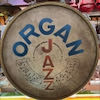Hi,
I use a 400/1k diamond plate, 6k King, and 1um lapping film progression on my chisels and plane irons for sharpening. I have used water before, but I prefer either glass cleaner(generic Windex) or a bit of soapy water when I use my diamond plate. But I don't like having to carry both that and water to the bench with me.
Has anyone used glass cleaner or soapy water on your water stones? Will this cause any issues you can foresee?
Thanks.




 Reply With Quote
Reply With Quote




